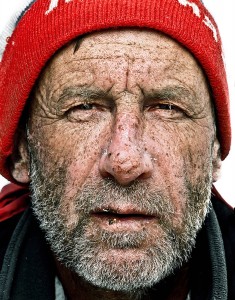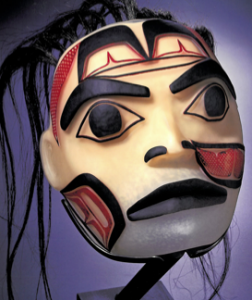Portraiture is a timeless art form and my favorite. It has never been super popular as a genre but none the less has lasted through time. Today’s social media has turned digital photography into a form of cheap and accessible portraiture. The human face is the foundation of portraiture which conveniently comes with built in narratives, often revealing ongoing dialogue between the artist, his material and the viewer.
Themes derived from the work can change with every new generation who gazes upon the art which likely has moved from its original venue and probably lost its original purpose and meaning. For example, the Fayum portraits from Roman Egypt made as funerary adornment give us a history lesson about what was revered. Then there is Gilbert Stuart’s portrait of George Washington and what is perceived is a large P.R. poster advertising the new republic complete with classical Greek columns and drapery parting to the outside world—the nation’s endless possibilities signed sealed and delivered as noted by the pen neatly returned to the ink stand and the rolled up documents.
This winter, three exhibitions at the Anchorage Museum show artists portraying Alaska through the face. On the fourth floor of the new addition, with the Chugach Mountains as backdrop, are landscapes by George Browne. Painting while on a 1947 Bradford Washburn climbing expedition of Mt. McKinley, Browne hauled a briefcase of wood panels about the size of legal pads and a limited palette. I’m guessing he packed ultramarine and cerulean blues, yellow ochre, red oxide, black and the now outlawed lead white which gave Browne incredible contrast when describing darks against lights at twenty thousand feet above sea level.
To Alaskans paintings of snow-capped mountains above rolling hills of scruffy vegetation, with foregrounds of glacial fed waterways interrupted by sand bars, aren’t very impressive. But when you realize how hard it was for Browne to set up his easel and commence painting only to quickly pack up when conditions changed, and without a wash-up sink, these paintings are amazing! Browne’s quick brush strokes, unfinished quadrants and incomplete value patches are all that is left when the snow and wind blinded his endeavors.
The show begins with a Washburn photograph-portrait of Browne composing at 8,900 feet. It appears to be a quiet moment weather-wise, as Washburn captures the artist deep in thought in his icy studio. In black and white, the artist stands before his easel, mixing paint from a well used palette that holds brushes lashed to the gooey surface. In the snow behind is the briefcase, presumably containing half-complete compositions, next to a pile of gear and a can of turpentine. Fast forward sixty-five years to the museum’s new uppermost gallery and envision as I did, having the voyeuristic privilege of imagining myself standing behind Washburn as he fiddles with the lenses of his weighty film camera (George Browne, Art of Altitude on view until May 1).

I left the traces of Bradford Washburn’s ascent and descended the cavernous wood-paneled stairwell to a more contemporary portraiture exhibition, also about exploring McKinley. Photographer and climber Tim Remick has blown up the faces of fellow climbers, mostly men of different ages, shot at different stages of their climbs. These digitized portraits are over five feet tall and hang close together eerily staring back, cluing the onlooker to lack of sleep behind sweat-frozen skin that hasn’t seen soap in weeks. The works are similar to ones painted by artist Chuck Close who also invites the viewer into large heads, but just so far. Unlike the staring faces of a Warhol screen print, these portraits contain no smudges of ink revealing the artist’s imperfections nor are they multiples thus minimizing the individual’s uniqueness as subject matter.
Remick’s photographs are in perfect clarity and unique, sending the viewer on a treasure hunt to find some trace of the artist’s presence. The viewer sees facial imperfections and the absence of personal grooming from days outside, but the door into what they have experienced is only ajar. This closed off realm is also evident in the bland titles of each piece. Each photograph has a number, age of face, and the elevation and day of the shoot. Personal names are absent.
The few clues to Remick’s presence are a male head wearing goggles which act like a mirror reflecting the base camp where Remick took this picture. The viewer looks through the goggles to see tents and supply boxes neatly surrounding the photographer/artist. Another male face shows Remick’s camera tripod captured in his pupils. Most of us can only imagine the hardship-craziness of risk-taking when climbing Mt McKinley. These oversized photographs show seemingly everyday folk, maybe your neighbors, that have accomplished extraordinary feats. They stare in unison capturing the viewer’s attention, but the onlooker can only surmise bits of the narrative and leave unfulfilled. (After: Portraits from Denali on view until April 15).
The photographs of Browne revealed some of the daily life of climbing. Remick demanded more from the viewer who must deduce the adventure by studying windblown faces, without total body language. Across from Tim Remick’s show are the glass works of Preston Singletary, an artist who blends his Tlingit heritage with Western education and makes the viewer work extra hard at creating a narrative. Singletary takes native baskets, dance implements, and pieces of a clan house, normally all fabricated from vegetation, and remakes them in blown glass. Myths about ravens and otters as well as abstract designs are etched into outer surfaces.

Continuing with my theme about faces, I chose Singletary’s masks. Traditionally they would have been made from wood and were often destroyed after ceremonial use. Chisel marks or flaws in the paint are usually present. If masks are old, the wood is often cracked and splintered. After all, there are Native American cultures that deliberately put flaws into their art as homage to their deity, the only perfect beings. Singletary’s objects tempt fate as they appear flawless, removing his trace altogether. A few masks possess animal hair and sinewed earrings, the only suggestion of living materials and Singletary’s handiwork. Otherwise he leaves the viewer to engage in a personal dialogue with the pieces. Sounds of birds coming from the audio portion of a looping video, aerial views of Alaskan scenery, help the viewer imagine personal narratives. (Preston Singletary: Echoes, Fire and Shadows through April 22)
These three exhibitions interpret Alaska through portraiture. Bradford Washburn’s photograph invites the viewer into a quiet moment of an expedition fraught with challenges. Showing only gigantic heads, Tim Remick throws McKinley climbers at viewers, only allowing a peek into their innermost thoughts. Preston Singletary attempts to remove himself completely from his art, letting the viewer alone to contemplate if a mask changes meaning when fabricated in an alternative medium while residing outside traditional ceremonial venues.




